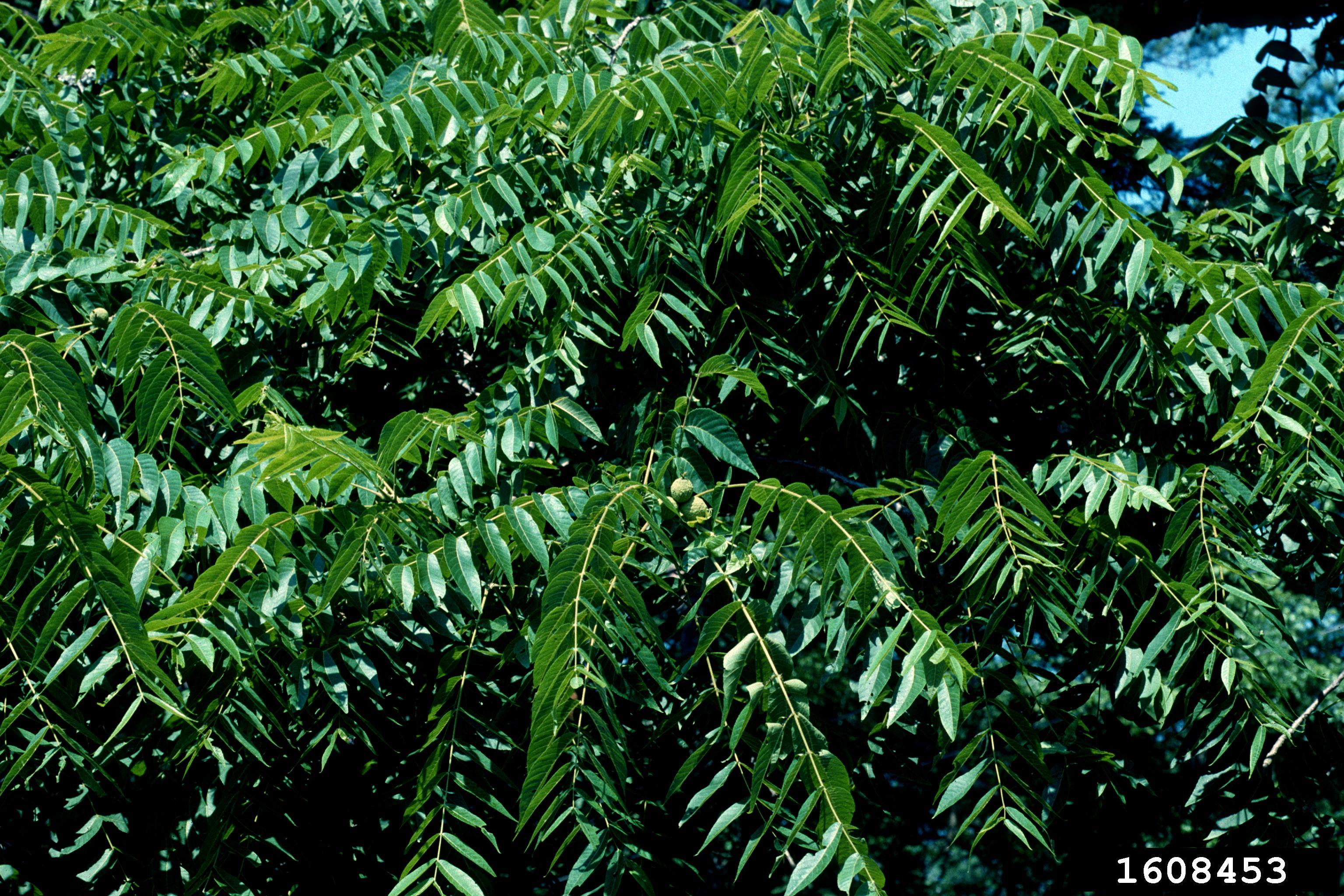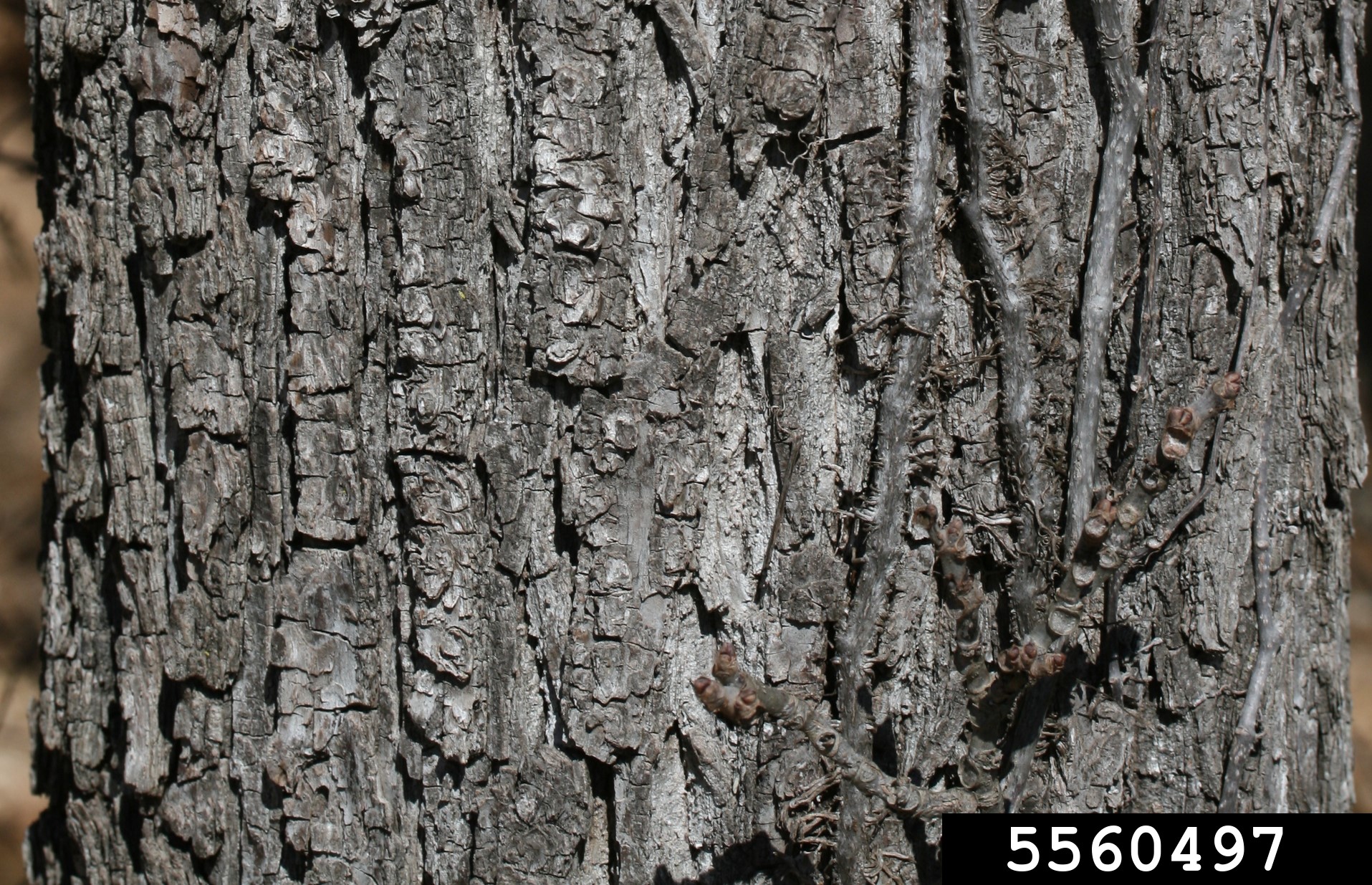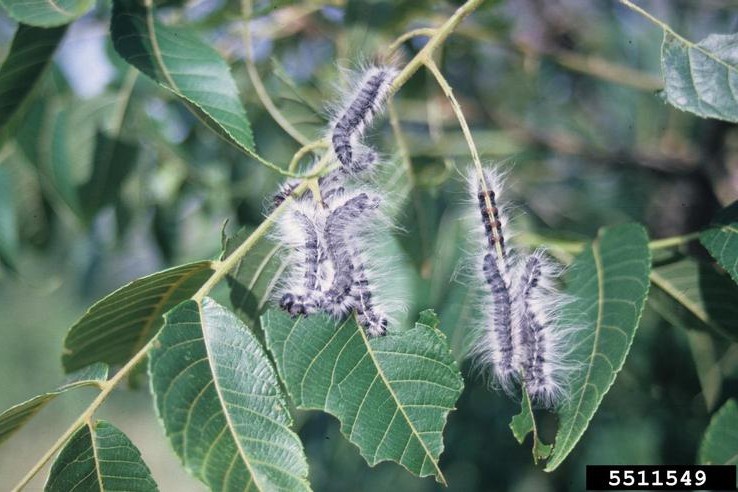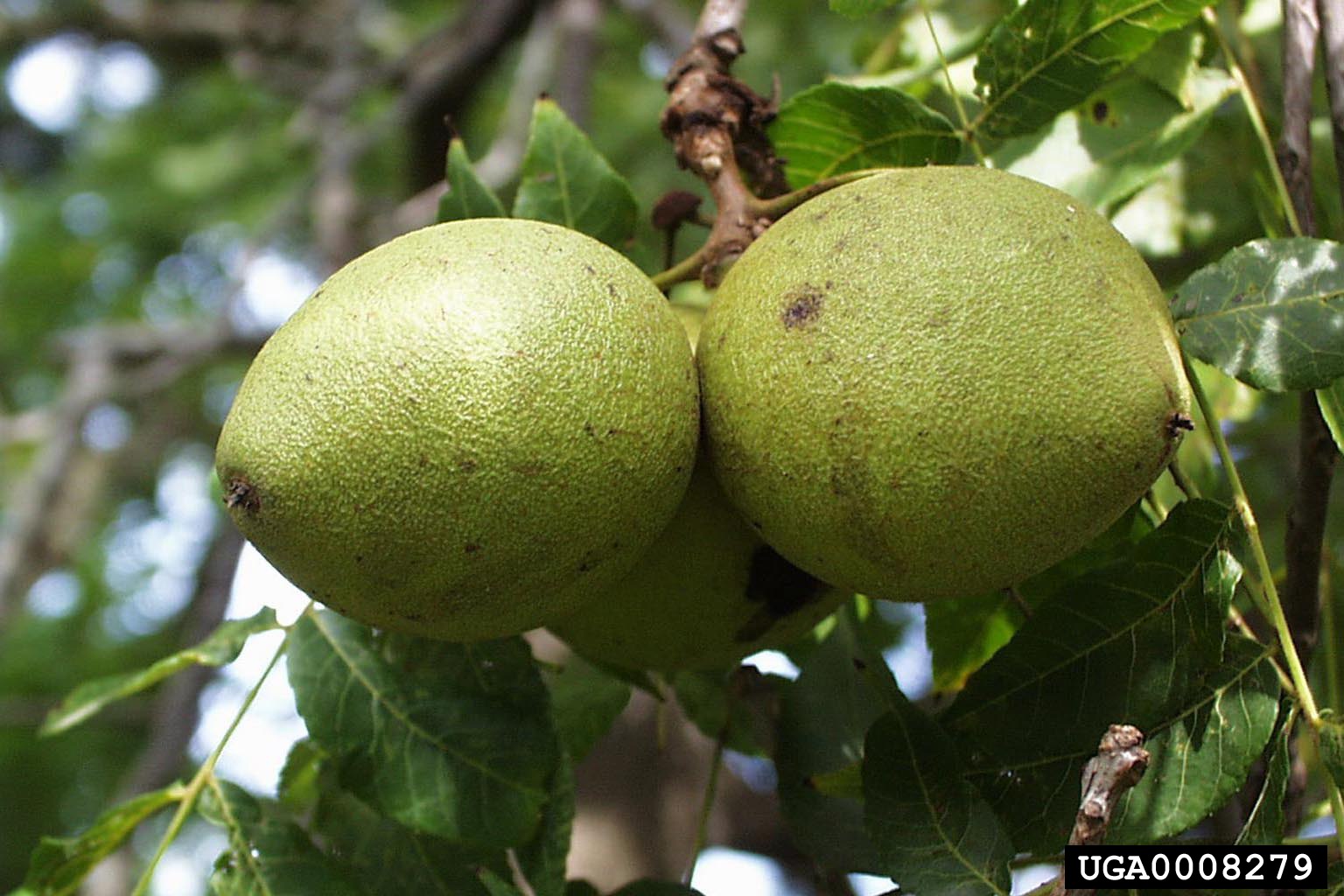Tree Highlight: Black Walnut
Black walnut
Juglans nigra (Family Juglandaceae)
The pinnately compound leaves of the black walnut
The basics
Black walnuts (Juglans nigra) can grow to 80 feet tall and is found across eastern and central North America. The nuts, contained in large round husks, are high in protein, and important for both wildlife and human consumption. Black walnut leaves, bark, nut husks, and roots contain a chemical called "juglone." This chemical prevents many other plants from growing nearby, allowing the black walnut to grow without competition from other vegetation. The large compound leaves of the black walnut have a spicy aroma that can be smelled from a distance. The tree is also appreciated for its dense and fine-grained wood. The black walnut tree is similar to the butternut (white walnut) tree: learn how to distinguish the two species here.
Did you know?
- Black walnut shell is used as a filler in dynamite.
- Black walnuts have a bold, rich flavor and contain the highest level of protein of any tree nut. They were even on the menu for the famous explorers Lewis and Clark during their expedition in the 19th century.
- The scientific name for black walnut is Juglans nigra. Juglans means “nut,” referring to the large nuts produced by these trees and nigra means “black,” referring to the dark coloration of the bark.
The black walnut is named after its dark-colored bark
Caterpillars of the royal walnut moth feed on black walnut foliage
Wildlife
- Mice and squirrels love black walnuts! These nuts are super important for them to survive the winter.
- More than 20 different moth species have been found on black walnut trees. This includes the caterpillars of beautiful luna moths and the spiky, large caterpillars of the regal walnut moth, called “hickory horned devils.” In the fall, one can find webworms building cobweb “tents” around walnut branches. If you crack open a black walnut seed, you might find a black walnut weevil grub inside.
- Owls, woodpeckers, bluebirds, and cardinals can be found nesting within the branches or cavities of black walnut trees. They enjoy the vibrant insect life found on different parts of the tree.
Uses
- Black walnuts are not just for animals! People love to eat them too. They are packed with protein and nutrients, making them a healthy snack.
- You can use black walnuts in various recipes. They add a delicious nutty flavor to baked goods, salads, and more. The black walnut’s husks can be used as a dark brown/black dye.
- The shells have been used to make cleaning products which have been used to shine the Statue of Liberty and different military vessels like Navy ships and submarines.
- Black walnut wood is valuable as it is strong, dark, and heavy, making it a good product for furniture, flooring, oars, and coffins.
The edible nuts of the black walnut tree are contained in green husks
Benefits
- Over a 20-year period, a healthy black walnut tree with a diameter of 25 inches will offset 16,558 car miles worth of CO2, absorb enough stormwater to fill 3,361 bathtubs, and remove an amount of pollution from the air – in gaseous and particulate form – equivalent in weight to 171 smartphones! Learn more at: https://mytree.itreetools.org/
Black walnut Tree of the Week video
By University of Kentucky Forestry and Natural Resources Extension.
Click to watchContact us: ufi@uky.edu
Images sourced from forestyimages.org





